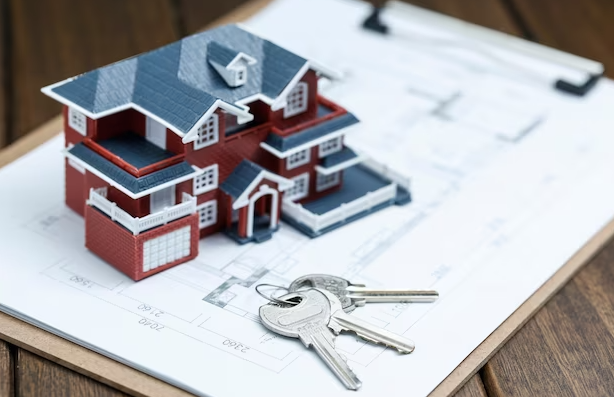Buying a house is a dream for many individuals. I’m sure it is one of the many things you’ve hoped to check off your bucket list. Sometimes, this dream also gets confusing.
Often, we get confused because we don’t know what the different processes and jargon that gets thrown around by the ‘experts’ of the real estate industry even mean. Not fully grasping something while striving hard to get it can be difficult and frustrating.
Here, we will list a comprehensive set of terms commonly used in the Indian real estate sector so that you can be prepared when an agent or a real estate company tries to confuse you between carpet area and built-up area, for example.
Here are some real estate terms that you must know:
Area
The area is the unit of land measurement. It is measured in acres, square feet, or square meters.
Allottee
An allottee is a person allotted a piece of land or property, usually by a government body/authority or a project developer.
Apartment
An apartment is an independent property sold to buyers that may include one or more rooms, usually a part of a multi-storeyed building with other facilities and amenities.
Appreciation
Appreciation is an increase in the value of a property due to changes in market value.
Assessed valuation
Assessed valuation is the value that a taxing authority places on a property to determine the taxation value of the said property.
Beneficiary
The person/institution designated to receive an income from a trust/estate/deed of trust.
Built-up area
The built-up area is the entire floor area that includes walls, lobbies, corridors, basements, and some common areas with the carpet area. Different regulatory bodies in different cities might have their built-up areas. As a buyer, you need to know what is included when the developer or authority measures the built-up area.
Carpet area
The usable area of an apartment, not including the wall thickness, is called the carpet area. The name means an area where you can place a carpet.
Completion certificate
More commonly known as Occupation Certificate (OC), this document is issued by a municipal corporation to a real estate developer. It is a document acknowledging that the developer has completed the project following proper formalities and approvals.
Central Business District
Central Business Districts or CBDs are commercial areas such as employment hubs and their immediate vicinity near many large corporate entities, retail outlets, and financial institutions.
Collateral
An asset, like a car or home, that guarantees the repayment of a loan.
Down payment
Down payment is usually paid by the buyer after the lending company has issued a loan of about 80–85% of the value of the property.
Depreciation
Depreciation is a decline in the value of a property due to ageing, physical deterioration, economic imbalance, etc.
EMI
EMIs are Equated Monthly Installments used to pay back the loans issued by financiers.
Fixed Rate of Interest
This rate of interest remains fixed throughout the loan.
Floating Rate of Interest
This kind of rate on a loan may fluctuate depending on the lending rate fixed by the Reserve Bank of India. This rate changes yearly but can happen as frequently as once in six months. The floating rates are adjusted according to the Prime Lending Rate. If the PLR falls, the customer benefits and vice versa.
Lease
A lease is a sum of money paid to the landlords at the beginning of the tenure and is repaid without interest when the tenure ends.
Lock in
Lockin is a written agreement which guarantees the buyer a fixed interest rate if the loan is closed in a fixed amount of time. The agreement also mentions the number of points to be paid in closing.
Mortgage
A mortgage is a type of loan where the borrower agrees to pay back the lender within a fixed period during which the property is the collateral.
Maintenance Charges
Maintenance Charges are charged by societies on homeowners, including security fees, maintaining complex structures, and contributions towards new investments and requirements.
Market value
Market value is the price of the property in an open market. A lot of factors, including demand, supply, quality, and other offerings, affect the market value of a property.
No Objection Certificate (NOC)
NOC is a certificate issued by the local authority to state that it has no objection to the commencement of construction. It states that the plans are in order, approvals are taken, and guidelines and rules are set and in force.
Possession letter
A possession letter is given by the developer to the customer to confirm that the property is completed and ready to be handed over to the customer to be moved into.
Pre-payment
Pre-payment involves the paying off of the loan before the tenure is over. A usual fee is charged, depending on lenders, for the pre-payment to happen.
Registration Charges
Registration Charges are issued to register a legal title under your name. It takes place in the sub-register’s office in a local court.
Super built-up area
The super built-up area includes everything mentioned in the ‘built-up area’ with a share of all the common areas proportionately divided among all unit owners.
Sale deed
The sale deed is essential in transferring the ownership of a property in exchange for a price paid. This document has to be registered.
Stamp Duty
Stamp Duty is a percentage of transaction value levied on every registered sale by the State Government. It ranges from 5–14%, depending on the state.
Tehsildar
A Tehsildar is a revenue authority or officer who collects revenue from a particular jurisdiction.
Tenant
A tenant is a person who is not the owner of the property but occupies it under specified terms and conditions for a specified period.
Title
The document provides legal backing that a person is the rightful property owner.
These are some terms you need to know when investing in real estate. In India, there has been a rapid increase in the demand for residential properties over the years.
Joyville Homes by Shapoorji Pallonji offers affordable housing projects in Hadapsar, Hinjawadi, Virar, Howrah, and Gurugram.
Visit — https://www.joyvillehomes.com/ today.





